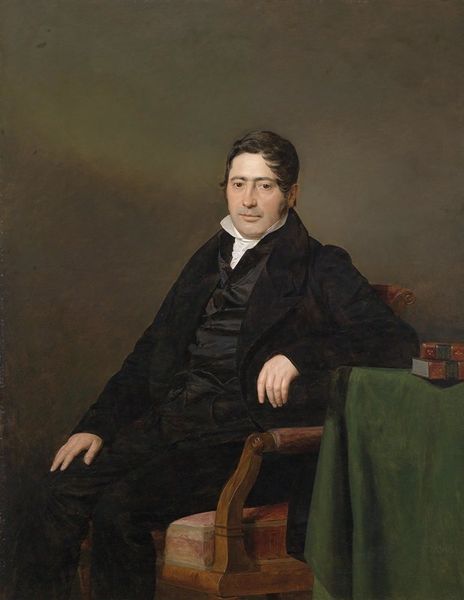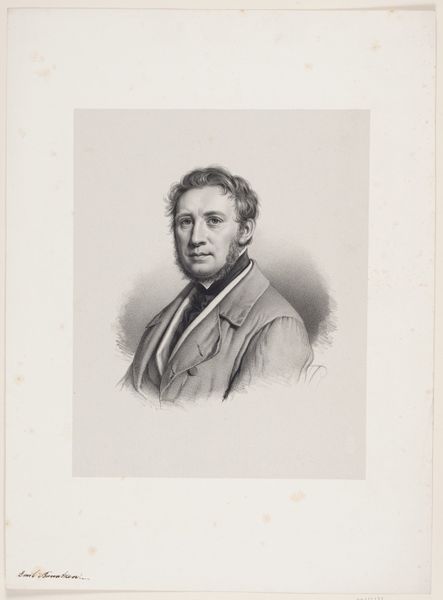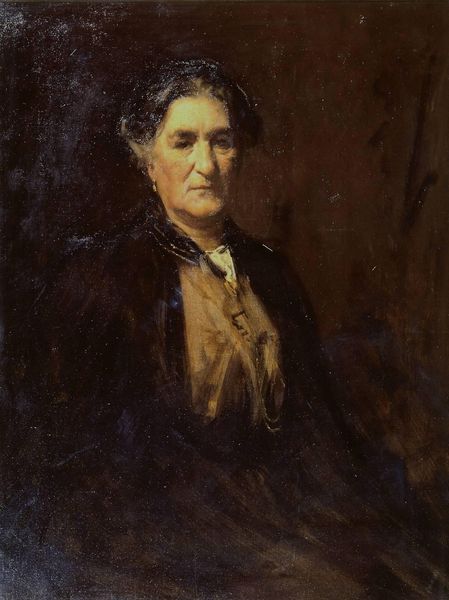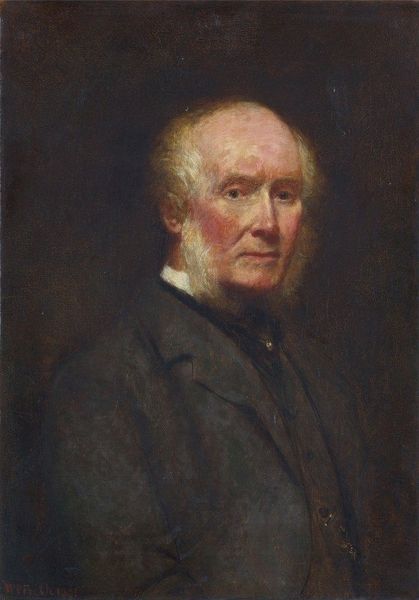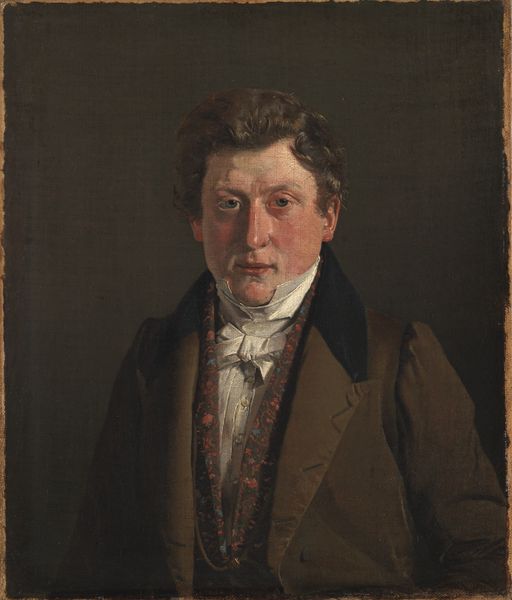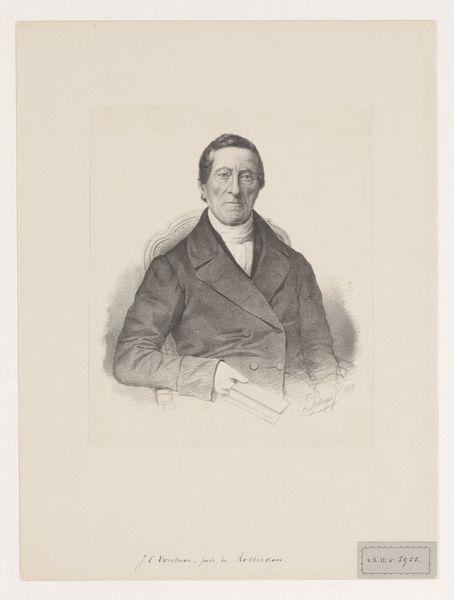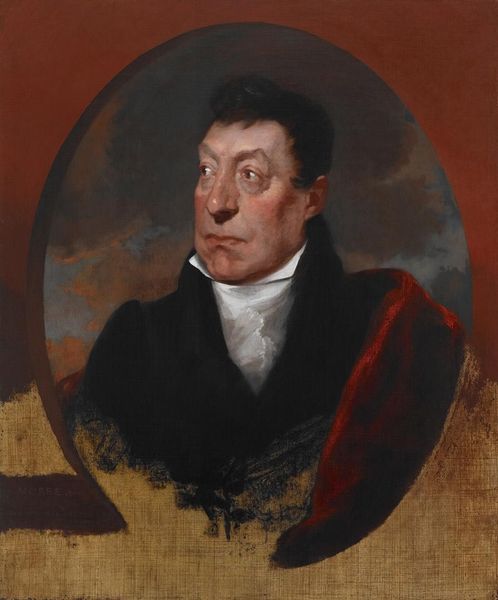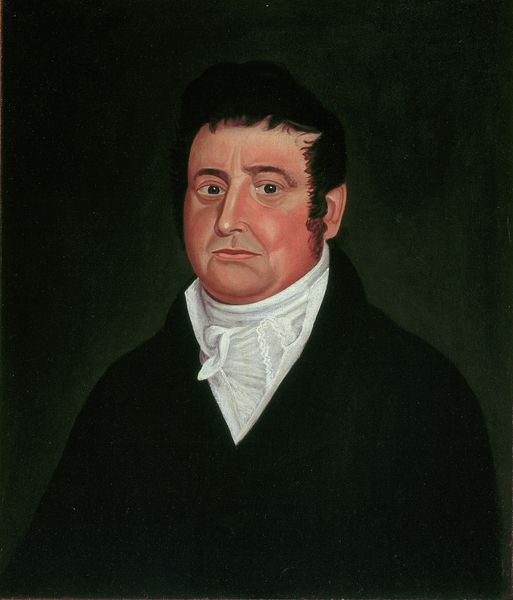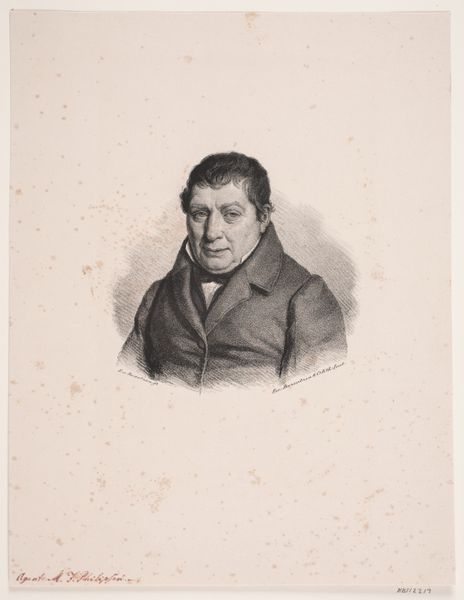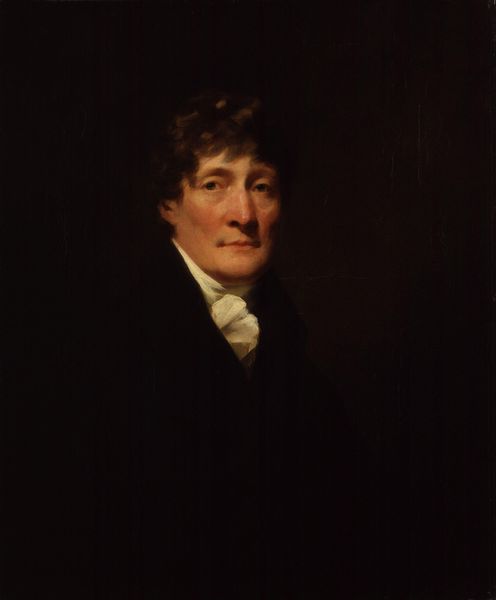
Herr Wohlleben, der Bruder des Wiener Bürgermeisters Stephan Edler von Wohlleben 1836
0:00
0:00
oil-paint
#
portrait
#
figurative
#
portrait
#
oil-paint
#
portrait subject
#
portrait reference
#
portrait head and shoulder
#
romanticism
#
portrait drawing
#
genre-painting
#
facial portrait
#
portrait art
#
fine art portrait
#
realism
#
celebrity portrait
#
digital portrait
Copyright: Public Domain: Artvee
Curator: Welcome. Here we have Ferdinand Georg Waldmüller's oil on canvas, "Herr Wohlleben, der Bruder des Wiener Bürgermeisters Stephan Edler von Wohlleben," created in 1836. The title translates to "Mr. Wohlleben, the Brother of Vienna's Mayor Stephan Edler von Wohlleben." Editor: Okay, first impression: I want to ask him about the book he’s holding. Is it juicy? Is it full of gossip about Vienna’s elite? His expression is… not quite boredom, but definitely reserved. The muted tones add to the atmosphere. Curator: The painting speaks to Waldmüller's status as a sought-after portraitist in Viennese society. Commissions like this elevated the artist’s standing, particularly within the milieu of influential political figures, like the sitter’s brother, Mayor Wohlleben. The style reflects the growing Biedermeier aesthetic: sober realism and attention to detail indicating bourgeois sensibilities. Editor: There's a real humanity to his face, despite the formal pose. Waldmüller captures the individual beneath the social standing. You can almost feel his weariness – maybe being the brother of the mayor is tiring work! He looks like he carries a city on his shoulders. It makes me think: What do you do when you are connected to someone influential, when it feels as though the accomplishments will always come back to who you are related to and not who you are yourself? Curator: These paintings also functioned as important visual records and markers of identity and status. They visually solidified the social order, representing prominent individuals and reinforcing their public image within a network of power. The context and circulation of the image mattered to this family in the early 19th Century. Editor: It’s like a Renaissance portrait, but drained of the usual pomp and swagger. Everything is dialed back, almost muted. There's such a sense of a private moment captured – a quiet dignity, you might say. Curator: Precisely. This piece offers an insightful study into how societal roles were both embodied and visualized in portraiture during the Biedermeier period. Editor: I love how even these historical portraits end up telling little stories if you just listen carefully. Curator: Agreed, each painting functions like a rich document reflecting how societies negotiated their visual cultures. Editor: A compelling portrait—it reminds us to really see the people we pass on the street.
Comments
No comments
Be the first to comment and join the conversation on the ultimate creative platform.
